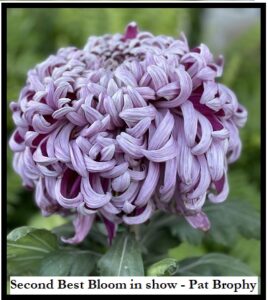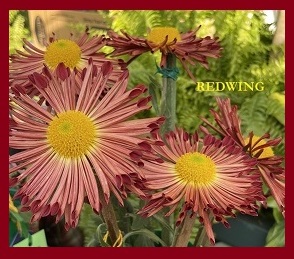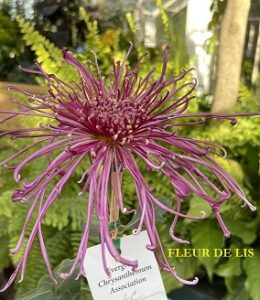HAPPY SPRING, HAPPY FLOWERS
MEETING OF THE ECA – THURSDAY MAY 14th, 2009 at 7 PM at the Seattle Police Athletic Association Office (SPAA) site at 11030 East Marginal Way South, Tukwila.
TELEPHONE COMMITTEE MEMBERS call your lists early in May as your calls do help to increase attendance.
YEARBOOKS – The 2009 ECA Yearbooks will be distributed by mail to those members that do not attend the May meeting.
PLANT CULTURE and SUPPLIES –Cultural suggestions are attached for May and will be discussed at the meeting.
Supplies available:
Contact Don Stark for soilless and supplies needed.
New and new slightly flawed clay pots are available at good wholesale prices from Washington Pottery near South Center. Washington Pottery is at 18815 – 72nd Ave. South in Kent.
NEW MEMBERS –. The ECA welcome’s our new members.
Novices take your Coach’s recommendations.
Pinch Date Lists were distributed at the April meeting and are available. (See Don Stark)
APPRECIATION – ECA appreciates all the work Mark Ross has done in the preparation of the 2009 ECA yearbook, they look great.
ANNOUCEMENT
Joe Pettigrew wants to inform club members that he has lots of clay pots of all sizes to anyone who needs them. They are all free. just call Joe.
Please let us know if you are interested in having your chrysanthemums viewed during our annual
August garden tour. . Thank you
If you prefer to receive future monthly notices by email only rather than US mail, please send an email to [email protected].
TO DO LIST for May and June (revised DRS 4/25/05)
Stopping:
Most plants are stopped April 15 through June 1, including the Early English classes. Keep your stop list handy and follow it rigorously. The calendar doesn’t move backwards. For #1 and #2 varieties the English literature recommends a fairly hard pinch; that is pinching 6-8 leafs down from the growing tip. For the incurves, #3, #13, #23 pinch the smallest portion of the growing tip to get more uniform growth of the laterals. For all varieties, fertilize 1-2 weeks before pinching to produce more laterals. This is especially true for the Fairweathers.
Final Potting into 8”, 9” or 10” pots. (Or maybe in the garden soil)
Preparation
Wash pots (in mild Clorox solution) then rinse in clear water.
Prepare potting mix. – Soil fewer users; add another 5-10% of screened pumice or Perlite to improve drainage. Also at this final stage, I recommend adding Cedar Grove compost or other fresh compost and a small amount of well-composted horse manure. This results in a mix of 6 parts M&R soil less, 4 parts compost, 1 part pumice, and small amounts of horse manure and Alfalfa meal.
Water plants in the 6” pots 1 day before repotting.
Potting
Pot on when the ring of roots around the bottom of the pot is semi root bound.
Cover drain holes in bottom of clay pots with a piece of broken crock to keep drain clear. Put a layer of broken sod or course pumice in the bottom of pot, then cover with 1 or 2 inches of the final (9”) mix. Place the 6” root ball on top of the 9” mix and fill around with the 9” mix. The top of the root ball should be 1+ inch below the top of the pot. Do not pack the mix except as necessary to hold the plant and stake in place. Stake with shingle or bamboo stick.
Add Marathon Systemic at this time to control black aphids. Sprinkle ½ tspn. Marathon on top of the potted plant, add a thin layer of mix over the top, then water moderately.
• Note: When potting on occurs after June 1, Consider dropping down one pot size pot
because the roots will not have time to fill the bigger pots. # 1 & #2 cultivars,
9” max, 8” could be used. #3s, 8” max.
Feeding and pest management
• After 3 weeks in final pot start summer feeding program.
` 1 to 2 Tsp. Peters 20-10-20 per gallon water, once a week.
Some plants will thrive with the heavier solution, while others
May not like so much fertilizer. Watch the leaves to gauge the fertilizer needed.
If leaves become hard and curl up you are overfeeding. If leaves are somewhat
weak and lighter green then more fertilizer would help
Miracle Grow is also used quite successfully by some during this summer stage.
• If plants are yellowish, first try drying them out. If drying the plant is unsuccessful, feed ½ tsp. Epsom Salts per plant. Leaf feeding of liquid iron such as Greenall or Sequesterine also helps green up the plant. Follow product directions. Do not over feed Liquid Iron.
• Review your pest management program every 2 weeks,
o Marathon systemic is the most effective black aphid control.
• Diazinon, Black Leaf 40 if available, and most rose insecticides are somewhat less effective, and require spraying every 2 weeks, as they are contact insecticides.
• Spray every two weeks with a fungicide. Ortho Funginex
is recommended. Other fungicides will work well if used regularly. If fungus gets away and is growing fast, a fungicide used to control early blight in tomatoes will really shut it down. I use Monterey “Bravo” for such control.
Lateral Control
• As side laterals develop after the final pinch, select the number of lateral to carry through the summer and remove all other side shoots. Generally the topmost lateral below the stem break is removed, as it is the weakest lateral structurally and easily broken off by accident. At this early stage you should carry 1-2 more lateral than you want at the bloom stage. An old saying goes: “I grow 2 for me and one for the bug.” Surplus laterals are removed later in the summer using the following guide.
• For #1 & #2 cultivars, carry 2 or 3 laterals initially, cull to 1 or 2 in Aug.
• For #3 cultivars, carry 5 laterals and cull Sept. or Oct.
• For #4 & b#5 cultivars, carry 4 to 5 laterals and cull to 2 to 3 in Sept.
• For Earliers (13-15 and 23-25) carry 4-5 laterals and cull to 2-3 in Sept.
• For Spiders, Quills, Spoons, Singles etc. follow the guide for #4 and #5.
Note: Cutting back to the few laterals seems to be a most difficult task for the novice. You must do it however if you wish to get large blooms.
Staking.
By now all plants will require staking. A 16-24 in stake should be placed along the main plant stem and tied to it to support and protect the plant. As the side laterals develop it will be necessary to add longer stakes that can support each lateral all the way to bud development. Care must be exercised so as to not spread the new laterals too far apart when staking, as one or more could be broken off. In other words let the laterals grow till they can be easily tied to the new stakes.
Know Your Nitrogen (John Harden supplied following in the newsletter for thought and discussion)
If you are growing in soilless mixes, it’s important to note the nitrogen source in your fertilizer. Several recent studies show that soft, weak growth, chlorosis and leaf burn, and poor flowering are due to an excess of ammonium nitrogen. Many fertilizers contain more ammonium nitrogen than nitrate nitrogen: a 20-20-20 formula, for example, has 3.96% ammonium nitrogen, 10.43% urea nitrogen and 5.61% nitrate nitrogen. Since urea hydrolizes to ammonia, the total amount of ammonium nitrogen is 14.39%.
Soil contains microorganisms which convert ammonium to nitrate, soilless mixes do not. This is a good reason to include soil as 20% or more of a mix. But, if you use a totally soilless mix, avoid fertilizers that have ammonium sulfate, urea or di-ammonium phosphate as their main nitrogen source. Look for those that contain calcium nitrate or sodium nitrate, or at least ammonium nitrate that is half ammonium and half nitrate.
Reprinted from the Avant Gardner, New York.
ARCHIVES
Best Bloom in Show – Lancashire Lad

Second Best Bloom in Show – Pat Brophy

Peoples Choice – Redwing

Peoples Choice – Fleur De Lis

WHAT WE GROW AND HOW WE GROW THEM
Pages
- ECA Anemone Varietals
- ECA Cushion Varietals
- ECA Incurve Varietals
- ECA Intermediate Incurve Varietals
- ECA Large Exhibition (Irregular Incurve) Varietals
- ECA Medium Exhibition Varietals
- ECA Quill and Spoon Varietals
- ECA Reflex Varieties
- ECA Single Varieties
- ECA Spider Varietals
- Evergreen Chrysanthemum Association
Meta
Archives
